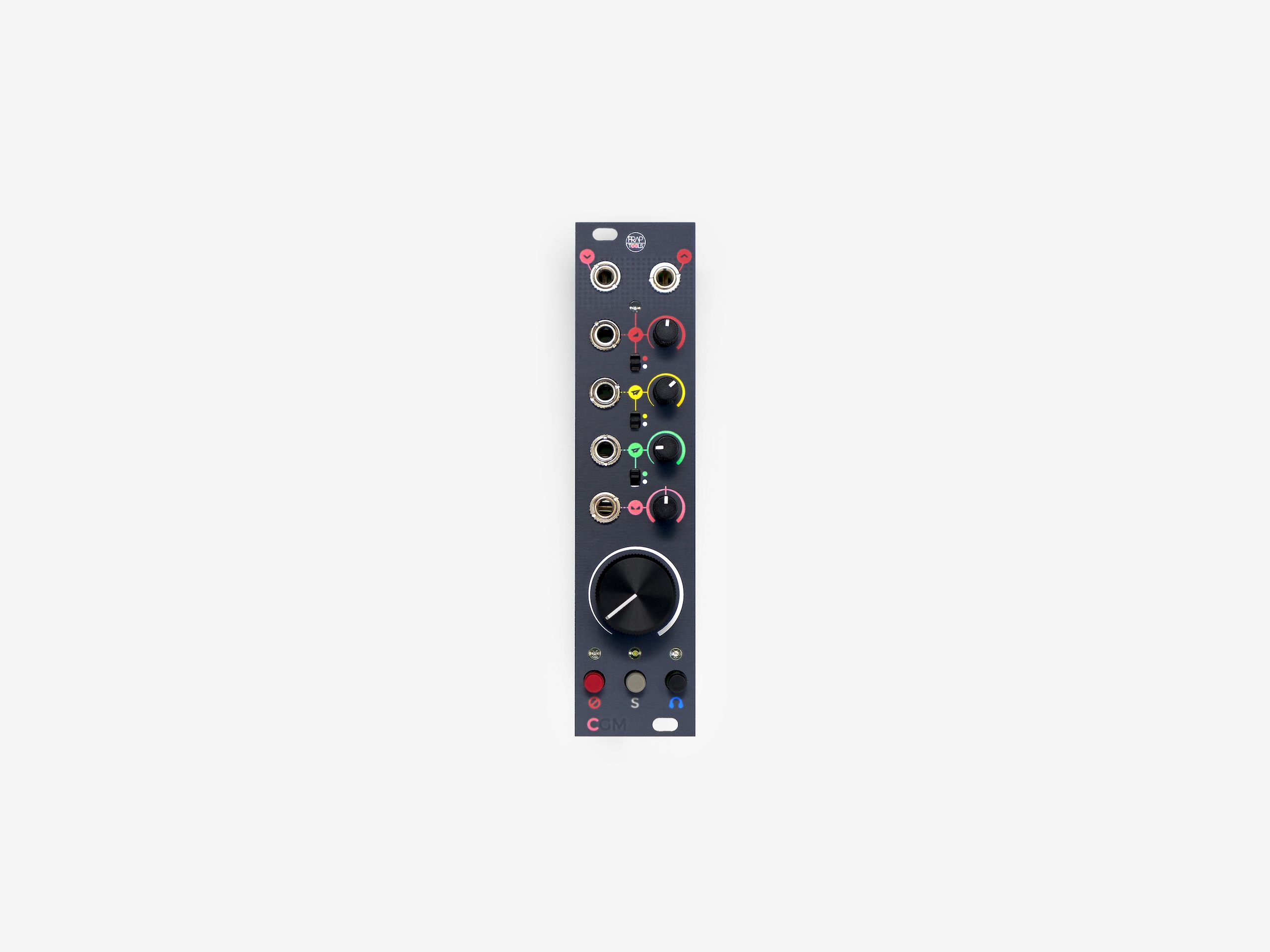The Channel module is the first member of the channel family. Its concept draws from the monophonic channel strip of a classic analog mixing console, to which we added CV over every key parameter: gain, FX sends, pan.
In this way, it can be used both as a professional mixing channel and a creative tool for advanced automations.
Mechanical mute, PFL, and Solo-in-Place complete the feature set suitable both for studio and live performances.
Channel circuits | 1 | 1 | 4 |
Mono/Stereo | Mono | Stereo/Dual mono | Stereo/Dual mono |
Pan | Pan | Pan/Crossfade | Pan/Crossfade |
CV over VCA | ✓ | ✓ | ✓ |
CV over pan | ✓ | ✓ | 2 (on ch. 1 and 4) |
CV over sends | 2 | ✓ | 2 (yellow on ch. 1, green on ch. 4) |
FX sends per channel | 2 | 2 | 2 |
FX sends circuit | Pre-/Post-fader | Pre-/Post-fader | Pre-/Post-fader |
Channel output | Mono Pre-/Post-fader | Mono/stereo Pre-/Post-fader | Stereo Post-fader local mix |
Mute | Mechanical latching | Electronic latching | Electronic latching |
Solo in place | Mechanical latching | Mechanical switch | Mechanical switch |
PFL | Mechanical latching | Electronic latching | Electronic latching |
Fader knob | ⌀ 20 mm | ⌀ 12 mm | ⌀ 12 mm |
Additional inputs | ╳ | ╳ | Mono aux in |
Additional outputs | ╳ | ╳ | 2 local mono FX sends |
Voltage-Controlled VCA with Saturation
The Channel module features two amplitude controls: an input VCA and a volume fader. The input VCA is voltage-controllable and, if the signal has enough amplitude, it can overdrive the circuit with a creamy, fat saturation. A peak LED tells when the signal is clipping, but don’t fear cranking it up!
Individual Output
An output allows you to take the channel output for parallel processing or multitrack recording. You can choose to work pre-fader (straight after the input VCA) or post-fader (with the main fader affecting the signal’s amplitude).
Two Voltage-Controlled Effect Sends
The yellow and green knobs are two effect sends levels. They can work pre- or post-fader, and they can be voltage-controlled for expressive and creative results.
Voltage-Controlled Pan
The Pan knob defines the stereo placement of the sound, which you can voltage-control as well.
Mute Button
The mute button allows you to remove a channel from the group sum with a click. The mute function works over the input VCA, so it will also mute the effect sends.
Solo-In-Place Button
The Solo-In-Place button lets you prepare a “scene” of channels to be isolated from the other ones, and then recall it through the Safe Solo button on the Group module. It can be seen as a mute group function that allows you to mute all the channels outside the solo scene with a click.
PFL Button
Push the PFL button and rotate the PFL fader on the master module to preview a channel: it’s convenient for tuning your oscillators or checking if everything is ok before bringing whatever sound source into the mix.
